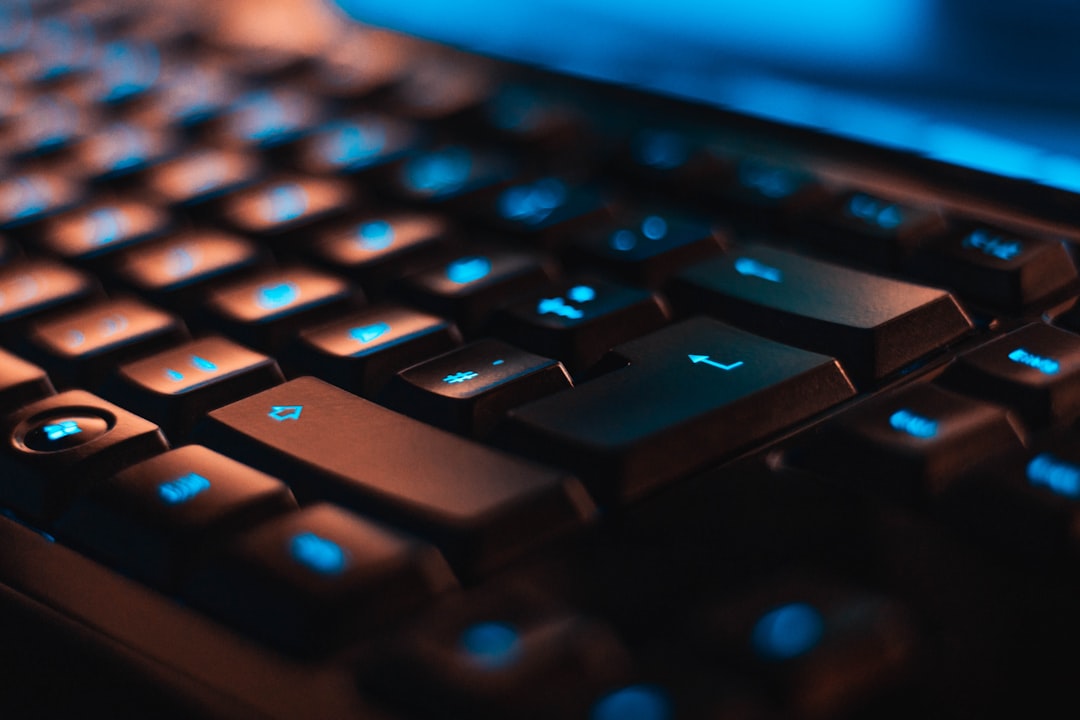As developers, we all strive to write code that is functional, efficient and effective. However, the reality is that coding mistakes happen, and they can lead to disastrous consequences. From broken applications to security breaches, coding mistakes can have a ripple effect that impacts both the development team and end-users alike.
That’s why it’s so important to avoid coding mistakes at all costs. Not only can they lead to frustrating and time-consuming issues, but they can also damage your reputation as a developer. In this blog post, we’ll explore some of the most common coding mistakes that developers make and provide tips on how to avoid them. By paying attention to detail and following best practices, you can develop code that is reliable, secure and easy to maintain.
So, let’s dive in and take a closer look at the importance of avoiding coding mistakes.
Copy and Paste Errors: How to Avoid Copying Bugs into Your Code
As a programmer, you might have encountered a situation where you need to use a piece of code that you wrote earlier in a new project. The easiest and quickest way to do that is copy-pasting the code. However, this can lead to unintended consequences if you are not careful. Copy and paste errors are one of the most common mistakes made by developers.
When you copy and paste code, you are replicating the same code in the new project. This means that if there were any bugs or errors in the original code, they will be copied over to the new project as well. This can be disastrous, especially if you are working on a large project with lots of code.
To avoid copy and paste errors, you should follow a few best practices. First, always review the code you are copying before pasting it into the new project. Look for any errors or bugs and fix them before copying the code over. This will ensure that you are not copying any mistakes into the new project.
Secondly, make use of functions and libraries. Instead of copying and pasting code, you can create functions and libraries that can be reused in multiple projects. This is a more efficient and effective way of handling code reuse.
Another best practice is to use version control systems like Git. This allows you to keep track of changes made to the code and roll back to previous versions if necessary. It also makes it easier to collaborate with other developers and avoid conflicting changes.
Copy and paste errors can be avoided by following best practices like reviewing code, using functions and libraries, and using version control systems. By taking these steps, you can ensure that your code is error-free and maintainable, making it easier for you and other developers to work on the project.
Secondly, make use of functions and libraries.
Not Testing Code: The Importance of Thorough Testing
As a developer, you need to test your code. It’s not just a best practice, but it’s crucial for avoiding bugs and ensuring that your application runs smoothly. The process of testing helps you identify errors, bugs, and other issues that may impact your application’s performance, security, or functionality.
When you test your code, you’re effectively taking a proactive approach to identify issues before they can cause problems for your users. Whether it’s a small bug or a major issue, finding problems early on can save you time, money, and headaches in the long run.
There are different types of testing, and each of them plays a crucial role in ensuring the quality of your code. Some of the common types of testing include unit testing, integration testing, performance testing, and user acceptance testing. Each type of testing serves a different purpose, and you’ll need to choose the right one(s) based on your specific needs.
Unit testing, for example, helps you ensure that individual units of code are working correctly. It’s a great way to identify bugs and errors in specific sections of your code. Integration testing, on the other hand, helps you ensure that different parts of your application work together seamlessly. Performance testing focuses on ensuring that your application can handle heavy loads and perform well under stress. User acceptance testing helps you ensure that your application meets the needs and expectations of your users.
Ultimately, the goal of testing is to identify and address any issues as early as possible. By doing so, you can avoid expensive and time-consuming bug fixes down the road. Testing also helps you ensure that your code is reliable, efficient, and user-friendly.
So, don’t skip testing! Make it a regular part of your development process. It may take some extra time and effort, but it’s well worth it in the end. With thorough testing, you can ensure that your application is running smoothly, your users are happy, and your reputation as a developer remains intact.
Make it a regular part of your development process.
Overcomplicating Code: Simplify Your Code for Better Results
When it comes to coding, it’s easy to get caught up in the details and lose sight of the bigger picture. This often leads to overcomplicating code, which can cause a whole host of problems. In fact, overcomplicating code is one of the most common coding mistakes that developers make, and it can have a significant impact on the quality, efficiency, and maintainability of your code.
So, what exactly do we mean by overcomplicating code? Essentially, it refers to the act of making your code more complex than it needs to be. This can happen for a variety of reasons, such as trying to solve a problem that doesn’t exist, using advanced techniques when simpler ones would suffice, or failing to refactor code that has become convoluted over time.
The problem with overcomplicating code is that it can make your code harder to read, understand, and maintain. It can also increase the likelihood of introducing bugs and errors into your code, which can be both time-consuming and costly to fix. Additionally, overcomplicated code can be a nightmare to debug, as it can be difficult to isolate issues and identify the root cause of problems.
So, how can you avoid overcomplicating your code? One of the best ways is to focus on simplicity. Instead of trying to write the most elegant, sophisticated code possible, aim to write code that is easy to read, understand, and maintain. This means using clear, concise variable names, breaking complex functions down into smaller, more manageable pieces, and avoiding unnecessary complexity wherever possible.
Another helpful strategy is to regularly review and refactor your code. This means taking the time to go back over your code and look for areas where it could be simplified or improved. By doing this, you can keep your code lean and streamlined, making it easier to work with in the long run.
Ultimately, the key to avoiding overcomplicated code is to stay focused on the bigger picture. Instead of getting bogged down in the details, take a step back and think about the overall goals and objectives of your code. By doing this, you can ensure that your code is as efficient, effective, and easy to maintain as possible.
This means taking the time to go back over your code and look for areas where it could be simplified or improved.
Commenting and Documentation: Why It’s Important and How to Do It Right
As a developer, one of the most important things you can do is document your code. Whether you’re working on a large team or just working on a solo project, proper documentation is invaluable in ensuring that your code is maintainable, understandable, and easy to work with. In this section, we’ll take a closer look at why commenting and documentation are so important, and we’ll share a few tips on how to do it right.
Why Is Commenting Important?
Commenting is the act of adding notes to your code that explain what it does, how it works, and why you made certain decisions. Commenting is important for several reasons:
- Clarity: Comments can make your code easier to understand by providing context and explanations for complex code.
- Maintainability: When you comment your code, you make it easier for other developers to make changes to your code in the future.
- Debugging: Comments can help you troubleshoot issues in your code by providing more information about how it’s supposed to work.
How to Do It Right
Here are a few tips for commenting your code effectively:
- Be Consistent: Use the same commenting style throughout your code. This helps make your code more readable and easier to maintain.
- Be Concise: Write comments that are easy to read and understand, but don’t go overboard. Over-commenting can make your code harder to read.
- Explain Why, Not What: When you comment your code, focus on explaining why you made certain decisions, rather than just explaining what the code does.
- Update Your Comments: As your code changes, make sure your comments stay up to date. Outdated comments can be more harmful than no comments at all.
- Use Tools: There are many tools available that can help you document your code, such as Javadoc, Doxygen, and Sphinx. These tools can help you generate documentation that’s easy to read and maintain.
Why Is Documentation Important?
Documentation is a broader concept than commenting. Documentation includes things like user manuals, installation guides, and API documentation. Documentation is important for several reasons:
- Usability: Good documentation makes your code more accessible to other developers and users.
- Clarity: Documentation can provide more in-depth explanations of how your code works than comments alone.
- Compliance: In some industries, documentation is required to comply with regulations and standards.
How to Do It Right
Here are a few tips for documenting your code effectively:
- Be Thorough: Document everything that users and developers need to know to use your code effectively.
- Use Examples: Provide examples of how to use your code in real-world scenarios.
- Be Organized: Organize your documentation so that it’s easy to navigate and find the information that users and developers need.
- Be Consistent: Use the same tone and voice throughout your documentation to ensure that it’s easy to read and understand.
- Update Your Documentation: As your code changes, make sure your documentation stays up to date. Outdated documentation can be more harmful than no documentation at all.
Commenting and documentation are critical components of good coding practices. By taking the time to document your code effectively, you can make it easier for other developers to work with, improve its maintainability, and ensure its longevity. So, whether you’re working on a small project or a large team, make sure you take the time to document your code properly.
Commenting is the act of adding notes to your code that explain what it does, how it works, and why you made certain decisions.
Ignoring Security: How to Keep Your Code Secure
As a programmer, it’s easy to get caught up in the excitement of creating something new and innovative. However, it’s important to remember that with great power comes great responsibility. One of the most crucial aspects of programming is ensuring that your code is secure. Ignoring security can lead to disastrous consequences, including data breaches, compromised systems, and even legal trouble. Here are some tips to help you keep your code secure:
1. Use Secure Passwords: One of the easiest ways to protect your code and data is to use strong, unique passwords. Avoid using simple words or numbers, and never reuse passwords across multiple accounts. There are many password managers available that can generate and store secure passwords for you.
2. Protect Against Injection Attacks: Injection attacks occur when an attacker injects malicious code into your application. The most common form of injection attack is SQL injection, which targets databases. To prevent injection attacks, make sure you sanitize input data and use prepared statements.
3. Keep Your Software Up to Date: Software vulnerabilities are constantly being discovered and patched, so it’s essential to keep your software up to date. This includes your operating system, web server, and any third-party libraries you use.
4. Use Encryption: Encryption is the process of encoding data so that it can only be read by authorized parties. Use encryption to protect sensitive data like passwords, credit card numbers, and personal information.
5. Limit Access: Limiting access to your code and data is an effective way to prevent unauthorized access. Use access controls like role-based access control (RBAC) and multi-factor authentication (MFA) to ensure that only authorized users can access your code.
6. Test Your Code: Testing is crucial for ensuring that your code is secure. Use tools like static analysis tools, dynamic analysis tools, and penetration testing tools to identify vulnerabilities in your code.
By following these tips, you can help keep your code secure and prevent security breaches. Remember that security is not a one-time job, but an ongoing process. Stay vigilant and keep your code up to date and secure.
There are many password managers available that can generate and store secure passwords for you.
Conclusion: The Value of Paying Attention to Detail in Coding
As we’ve discussed in the previous sections, there are several common mistakes that coders can make when writing their code. These mistakes can range from simple errors like copy and paste mistakes to larger, more complex issues like neglecting to test your code thoroughly.
However, despite the many ways that coding can go wrong, there is one overarching theme that can help to prevent many of these mistakes from happening in the first place: paying attention to detail.
When you’re writing code, it’s easy to get caught up in the big picture and lose sight of the little things. However, it’s often the little things that can cause the biggest problems. Whether it’s a missing semicolon or a misplaced bracket, these small errors can quickly snowball into major issues that can cause your code to fail.
That’s why it’s so important to take the time to pay attention to the details when you’re writing your code. This means double-checking your work, testing your code thoroughly, and making sure that everything is working as it should be before you move on.
Of course, paying attention to detail isn’t always easy. It can be tedious and time-consuming, and it can feel like it’s slowing you down. However, the truth is that taking the time to pay attention to detail can actually save you time in the long run. By catching errors early on, you can prevent them from becoming bigger problems down the line.
Overall, the key to successful coding is to be detail-oriented, adaptable, and meticulous. By following the tips and best practices outlined in this post, you can avoid many of the common coding mistakes that plague developers and produce high-quality, error-free code that works as it should. So take the time to pay attention to the details, and you’ll be well on your way to becoming a skilled and successful coder.





